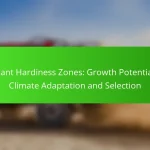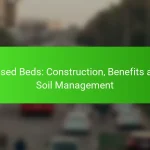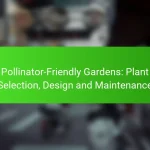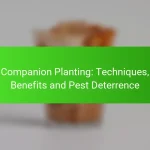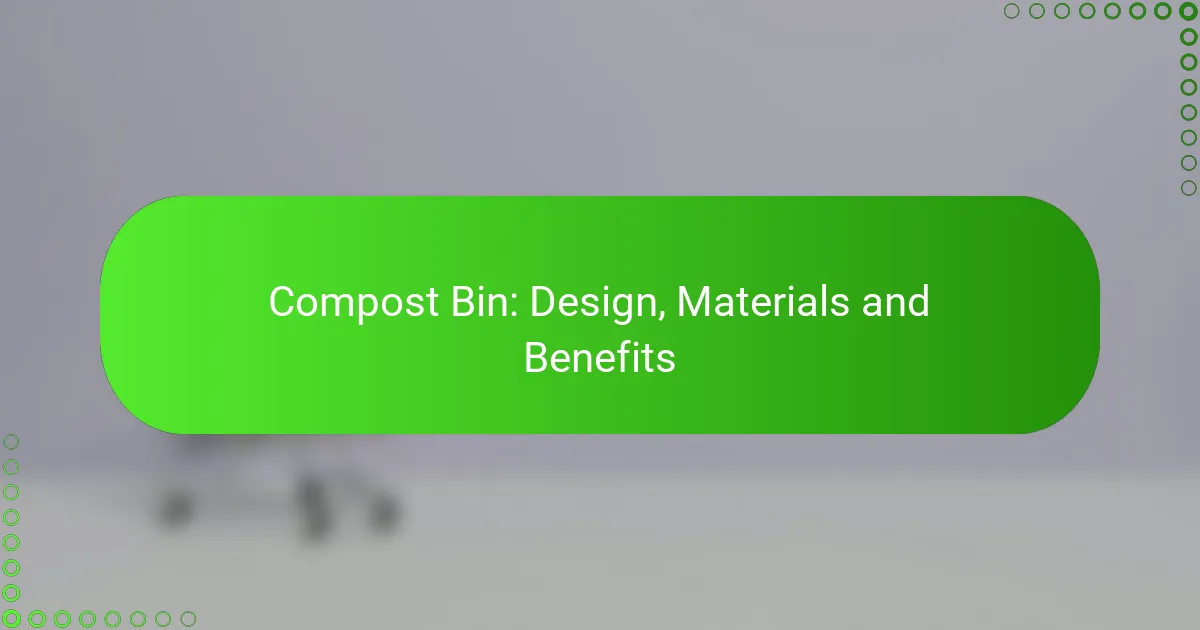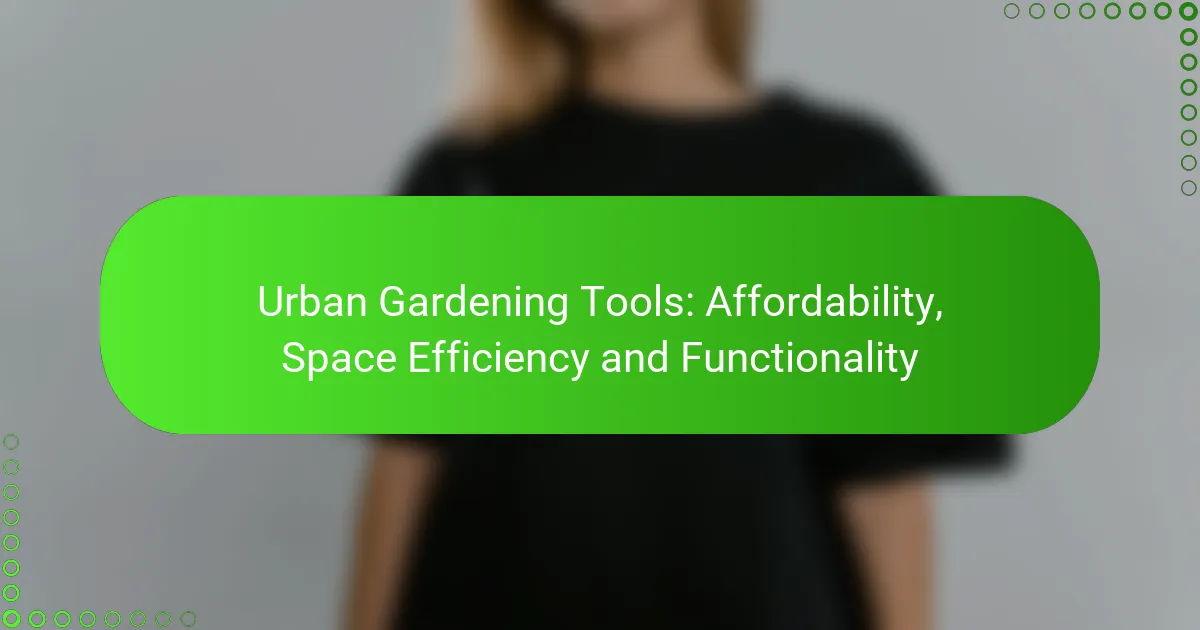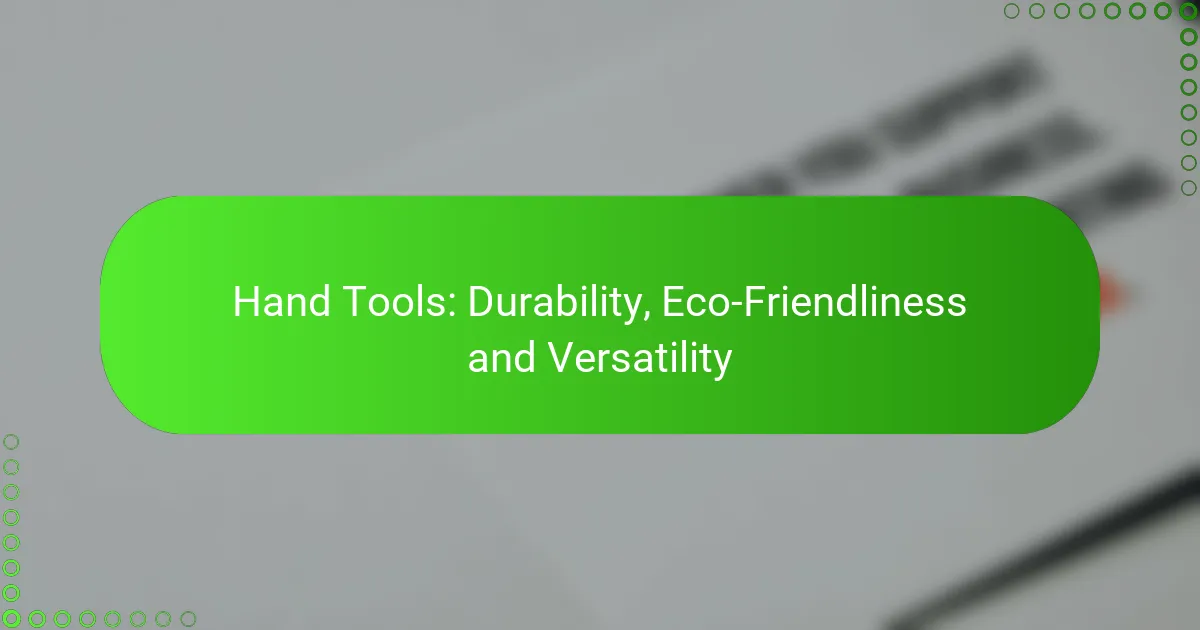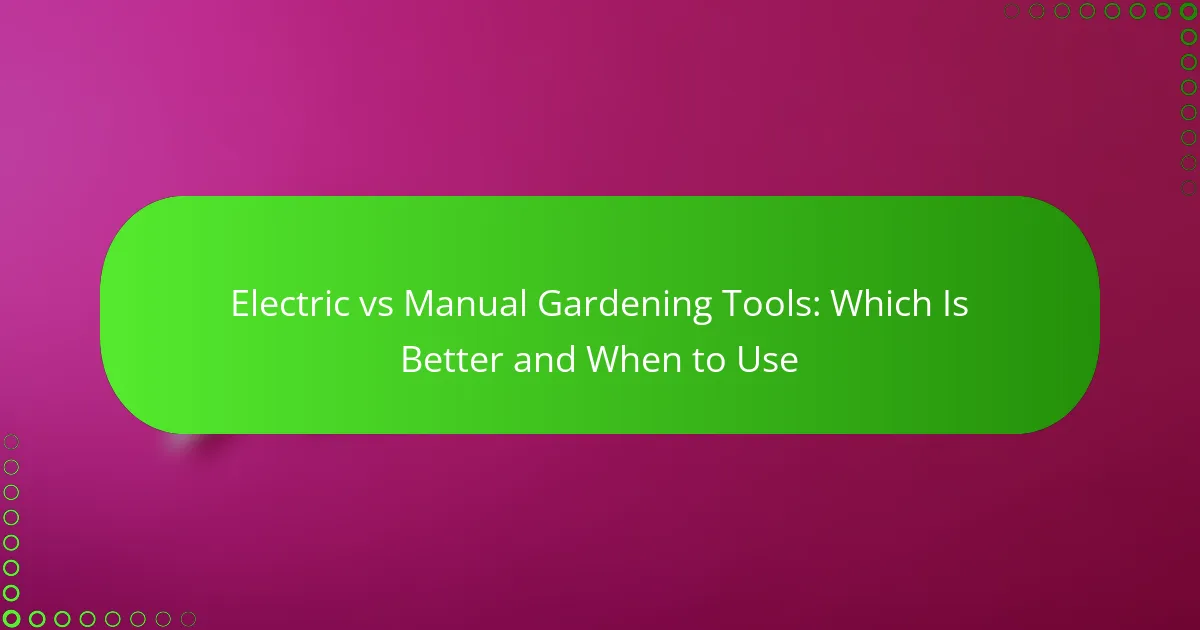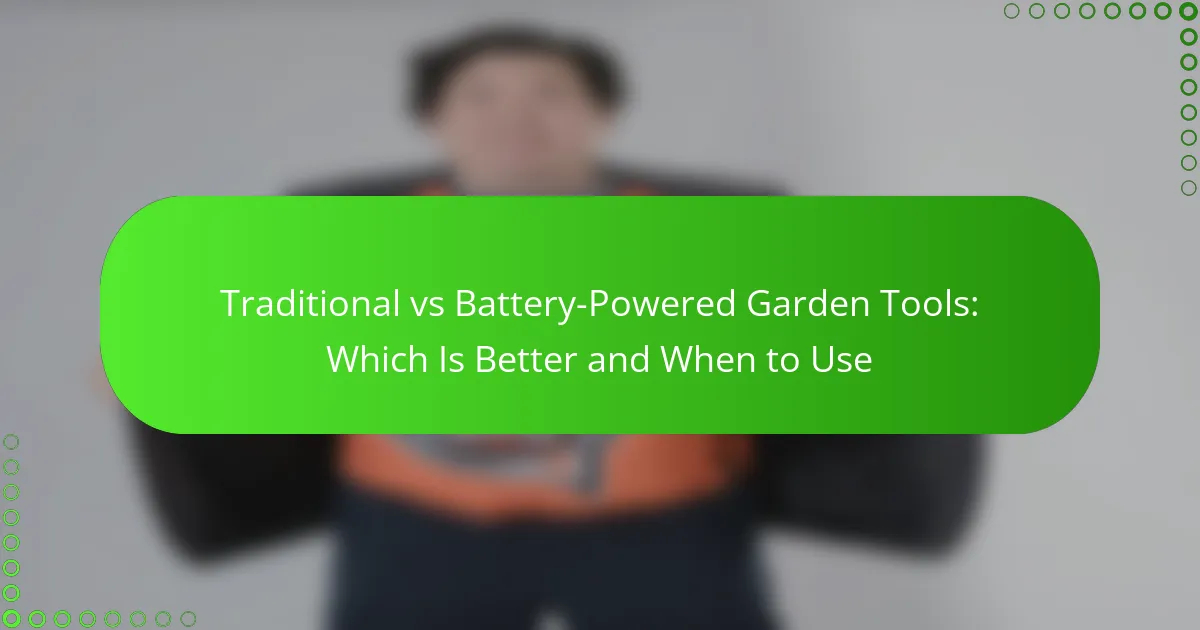A compost bin is an essential tool for transforming organic waste into nutrient-rich soil, benefiting both gardens and the environment. Various designs, such as wooden bins, plastic tumblers, and worm composting systems, cater to different gardening needs and conditions. The choice of materials, including wood, plastic, and metal, can influence the bin’s durability and the efficiency of the composting process.

What are the best compost bin designs for South Africa?
The best compost bin designs for South Africa include traditional wooden bins, plastic tumblers, worm composting systems, metal bins, and DIY options. Each design has unique benefits and considerations that cater to various gardening needs and environmental conditions.
Traditional wooden compost bins
Traditional wooden compost bins are popular due to their natural aesthetics and durability. Typically made from untreated timber, these bins allow for good airflow, which is essential for effective decomposition. They can be built in various sizes, accommodating small to large composting needs.
When constructing a wooden bin, ensure proper drainage and ventilation. Avoid using treated wood, as chemicals can leach into the compost. Regularly turning the compost will help maintain aeration and speed up the breakdown process.
Plastic compost tumblers
Plastic compost tumblers are designed for easy mixing and aeration, making them a convenient choice for many gardeners. These bins are typically sealed, which helps retain moisture and heat, speeding up the composting process. They are also lightweight and easy to move.
Consider a tumbler with a capacity of at least 200 liters for effective composting. Regularly rotate the tumbler every few days to ensure even decomposition. Be mindful of the temperature inside the tumbler, as it can rise significantly, which may require adjustments in the materials added.
Worm composting bins
Worm composting bins, or vermicomposting systems, utilize worms to break down organic waste into nutrient-rich compost. This method is particularly effective for kitchen scraps and small amounts of garden waste. A worm bin can be kept indoors or outdoors, making it versatile for various living situations.
To set up a worm bin, choose a container with drainage holes and a lid. Red wigglers are the most common worms used, and they thrive in a moist, dark environment. Feed them a balanced diet of vegetable scraps, avoiding citrus and meat, to maintain a healthy worm population.
Metal compost bins
Metal compost bins are sturdy and can withstand harsh weather conditions, making them a long-lasting option. They often feature a design that allows for good airflow while preventing pests from accessing the compost. These bins can be more expensive than wooden or plastic options but offer durability.
When using a metal bin, consider lining it with a breathable material to enhance aeration. Regularly monitor moisture levels, as metal can heat up quickly in the sun. Ensure the bin has a secure lid to keep out unwanted animals.
DIY compost bin options
DIY compost bins can be made from various materials, including pallets, wire mesh, or even old barrels. Crafting your own bin allows for customization based on available space and materials. This option is often cost-effective and can be tailored to fit specific composting needs.
When building a DIY bin, focus on creating a structure that allows for airflow and drainage. Ensure it is easily accessible for adding materials and turning the compost. Regular maintenance, such as turning and monitoring moisture, will help achieve optimal composting results.
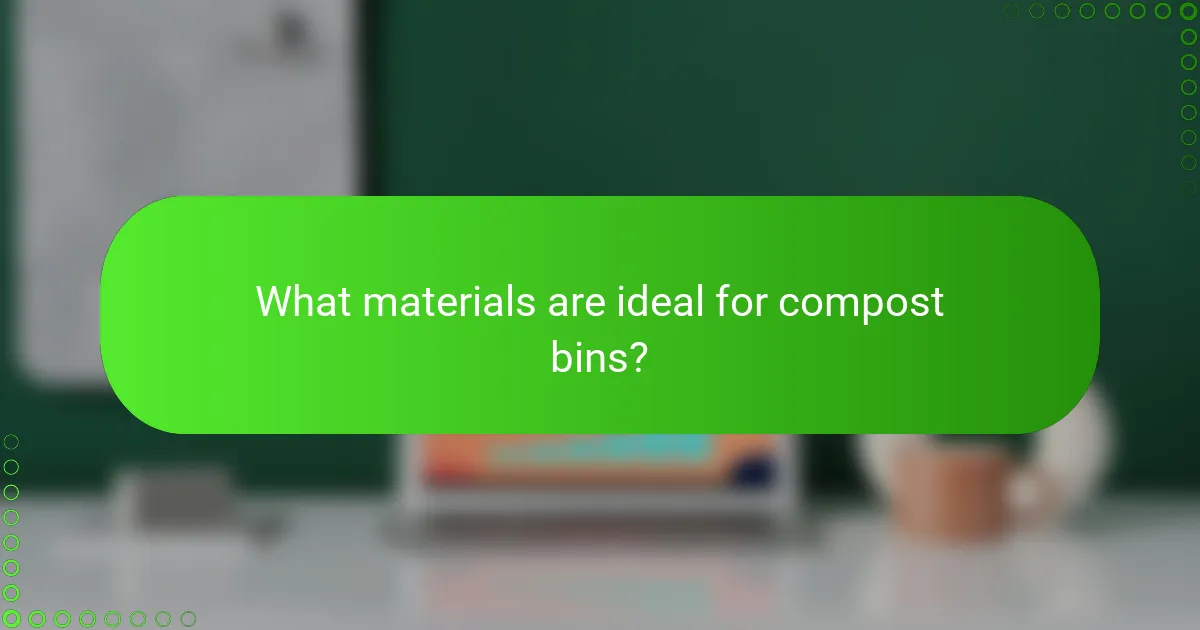
What materials are ideal for compost bins?
Ideal materials for compost bins include wood, plastic, metal, and eco-friendly options. Each material has its own advantages and considerations that can affect the composting process and durability of the bin.
Wood types for compost bins
Wood is a popular choice for compost bins due to its natural aesthetic and good insulation properties. Common types include cedar, redwood, and untreated pine, which resist rot and pests. Avoid using treated wood, as chemicals can leach into the compost.
When constructing a wooden compost bin, ensure proper ventilation by leaving gaps between slats. This promotes airflow, which is essential for effective decomposition.
Plastic materials for compost bins
Plastic compost bins are lightweight, durable, and often come in pre-made designs. Look for high-density polyethylene (HDPE) as it is resistant to UV rays and can withstand outdoor conditions. Many plastic bins feature a closed design to retain heat and moisture.
Consider bins with a dark color, as they absorb heat better, speeding up the composting process. Ensure the bin has adequate ventilation holes to allow for airflow, which is crucial for aerobic decomposition.
Metal options for compost bins
Metal compost bins, typically made from galvanized steel or aluminum, are robust and can last for many years. They resist pests and are less likely to warp compared to wood. However, they can heat up quickly, which may lead to faster composting.
Keep in mind that metal bins may require insulation in colder climates to maintain optimal temperatures for composting. Ensure that the bin has proper drainage to prevent excess moisture buildup.
Eco-friendly compost bin materials
Eco-friendly compost bins can be made from recycled materials, such as reclaimed wood or recycled plastic. These options reduce waste and promote sustainability. Look for bins made from biodegradable materials, which can break down over time without harming the environment.
Additionally, consider compost bins that use natural fibers, like bamboo or straw, which are both renewable and compostable. Ensure that any materials used are free from harmful chemicals to maintain the integrity of your compost.
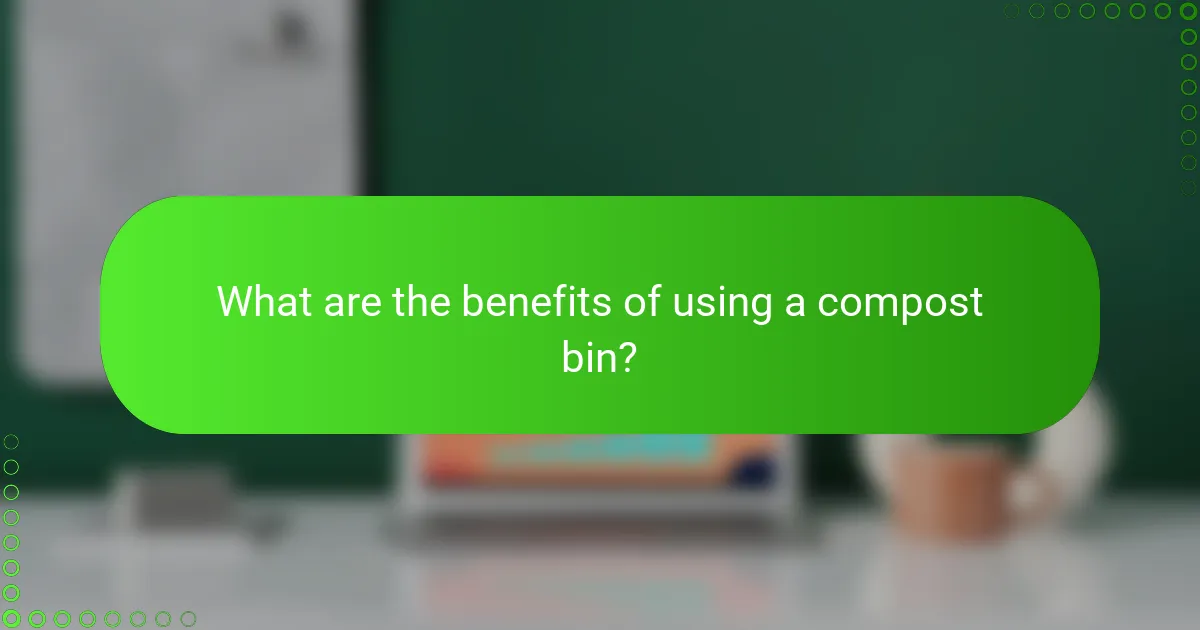
What are the benefits of using a compost bin?
Using a compost bin offers numerous advantages, including improved soil health, reduced waste, and potential cost savings. Composting transforms organic materials into nutrient-rich soil amendments, benefiting both gardens and the environment.
Soil enrichment
Composting significantly enhances soil quality by adding essential nutrients and improving its structure. The organic matter in compost helps retain moisture, promotes healthy microbial activity, and increases aeration, all of which are vital for plant growth.
To maximize soil enrichment, mix compost into garden beds or use it as a top dressing for lawns. Regularly applying compost can lead to healthier plants and increased yields in vegetable gardens.
Waste reduction
Composting effectively reduces the amount of organic waste sent to landfills, which can account for a significant portion of municipal waste. By diverting kitchen scraps, yard waste, and other biodegradable materials, composting minimizes landfill overflow and lowers greenhouse gas emissions.
To get started, keep a designated compost bin for food scraps and yard debris. This simple practice can lead to a substantial decrease in household waste, often reducing waste volume by up to 30%.
Cost savings on fertilizers
Using compost can lead to considerable savings on fertilizers, as it provides a natural source of nutrients for plants. Instead of purchasing chemical fertilizers, gardeners can rely on homemade compost to meet their plants’ nutritional needs.
For effective fertilization, incorporate compost into the soil before planting or use it as a side dressing during the growing season. This approach not only saves money but also promotes sustainable gardening practices.
Environmental impact
The environmental benefits of composting are significant, as it reduces landfill waste and lowers carbon emissions. By composting organic materials, you contribute to a circular economy that recycles nutrients back into the soil, fostering a healthier ecosystem.
Additionally, composting can help mitigate soil erosion and improve water retention, which is increasingly important in regions facing drought. Engaging in composting practices supports local biodiversity and promotes sustainable land management.

How to choose the right compost bin?
Choosing the right compost bin involves considering factors such as size, location, and budget. A suitable bin will facilitate effective composting while fitting your space and financial constraints.
Size considerations
When selecting a compost bin, size is crucial. Smaller bins, typically around 30 to 50 gallons, are ideal for limited spaces like balconies or small yards, while larger bins, ranging from 100 to 200 gallons, are better for larger gardens. Consider how much organic waste you generate to determine the appropriate size.
It’s also important to think about the bin’s capacity to manage the composting process. A bin that is too small may not accommodate your waste, leading to ineffective composting, while an excessively large bin can become unwieldy and hard to maintain.
Location factors
The location of your compost bin significantly impacts its efficiency. Ideally, place the bin in a shaded area to maintain moisture levels and prevent overheating. Avoid placing it too close to trees or shrubs, as roots may invade the compost.
Accessibility is another key factor; ensure the bin is easy to reach for adding materials and turning the compost. If you live in an area with heavy rainfall, consider a spot that allows for good drainage to prevent waterlogging.
Budget options
Your budget will influence the type of compost bin you can choose. Basic bins can range from $30 to $100, while more advanced systems, such as tumblers or electric composters, may cost several hundred dollars. Assess your composting goals to determine how much you are willing to invest.
For those on a tight budget, DIY options are also available. You can create a compost bin using pallets or wire mesh, which can be a cost-effective solution while still being functional. Just ensure that any materials used are safe and suitable for composting.

What are the maintenance tips for compost bins?
Proper maintenance of compost bins is essential for efficient decomposition and odor control. Key practices include regularly turning the compost, managing moisture levels, and monitoring temperature to ensure optimal conditions for microbial activity.
Turning the compost
Turning the compost helps aerate the material, promoting faster decomposition. Aim to turn your compost every few weeks, or when you notice a decrease in heat. Use a pitchfork or compost aerator to mix the materials thoroughly.
When turning, check for dry or overly wet areas. If you find any, adjust the moisture content by adding water or dry materials like leaves or straw. This practice not only speeds up the process but also helps prevent unpleasant odors.
Moisture management
Maintaining the right moisture level is crucial for composting success. The compost should feel like a damp sponge—moist but not soggy. If it’s too dry, add water or green materials; if it’s too wet, incorporate dry materials to absorb excess moisture.
In dry climates, consider covering the compost bin with a tarp to retain moisture. Conversely, in very wet conditions, ensure proper drainage to avoid waterlogging, which can slow down decomposition and create odors.
Temperature monitoring
Monitoring the temperature of your compost is vital for ensuring effective microbial activity. Ideally, the internal temperature should reach between 55°C to 65°C (130°F to 150°F) to kill pathogens and weed seeds. Use a compost thermometer to check the temperature regularly.
If the temperature drops significantly, it may indicate a lack of nitrogen or moisture. Adjust the compost by adding nitrogen-rich materials like kitchen scraps or grass clippings and ensure adequate moisture levels to reactivate the microbial process.
